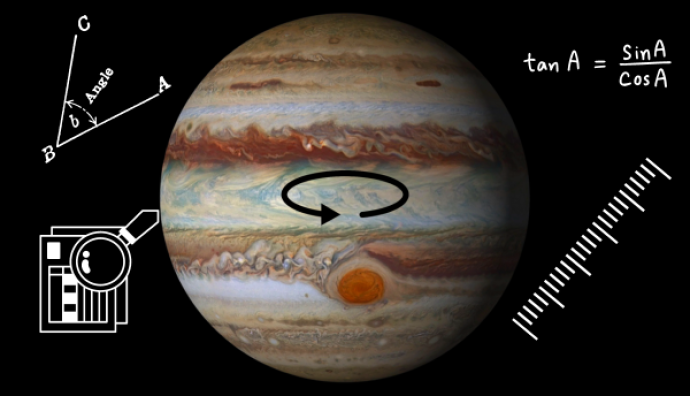You may know that the Earth takes 24 hours to rotate around its axis, but did you know other planets rotate as well? However, they do not all spin at the same rate.
So how long is a day on Jupiter? In this activity, you will find out for yourself!
Investigate real observations of Jupiter, made using the Liverpool Telescope. You will use the data (and some maths) to estimate how long it takes the giant planet to rotate once around its axis.
By the end of this activity you will:
- Have used real data from the Liverpool Telescope
- Have observed and measured the position of Jupiter's Great Red Spot
- Applied trigonometry to your measurements to calculate how long it takes Jupiter to rotate
- Compared your results with the true value
To complete this activity you will need:
- The data files (download FITS files below)
- A scientific calculator with trigonometric functions
- Something to record your results and working out (e.g., tablet, laptop, notebook, and pen)
IT Equipment
- Software that can open FITS files
Image

Credit
This work
by The Schools' Observatory
is licensed under All rights reserved
